Bookshelves are a staple in many homes, serving as not just functional storage units but also as decorative pieces that display our personal collections and cherished items. However, over time, the appearance of our bookshelves can become outdated or worn out. Whether you want to breathe new life into an old bookshelf or simply give it a fresh look to match your evolving style, learning how to cover a bookshelf is a fantastic DIY project that can transform your space. In this article, we will explore various methods and materials to effectively cover your bookshelf, providing you with step-by-step instructions and creative ideas to revamp this essential piece of furniture. So let’s dive in and discover the secrets of covering bookshelves!
Why Should I Cover My Bookshelf?
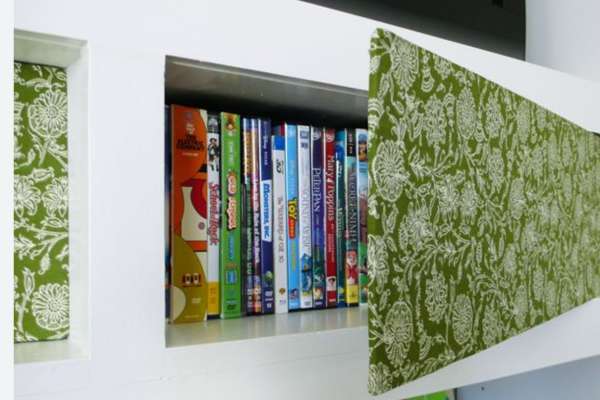
Covering your bookshelf serves multiple purposes. Firstly, It protects your books from dust accumulation, Which can damage the book’s pages And bindings over time. Secondly, It shields your books from direct sunlight which can cause fading or discoloration, Especially in older books. A cover also provides an added layer of protection against accidental spills or scratches that could harm the books. Lastly, A covered bookcase can enhance your room’s aesthetic, especially if you select A cover that complements your interior décor.
What Materials Can I Use To Cover My Bookshelf?

There are numerous materials You can use to cover your bookshelf. Curtains made of fabric such as cotton, Velvet, Or linen can add A touch of elegance And are easily removable for cleaning. Plastic covers are durable and provide excellent protection against spills, But may not look as stylish. For A more rustic look, Consider using burlap or canvas. If your main concern is protecting books from sunlight, You can use UV-protective film or blinds. Lastly, glass doors are an option for A clean, Modern look that also allows visibility of your books.
How often should I clean my bookshelf cover?
The cleaning frequency of your bookshelf cover largely depends on the material used and the amount of dust in your environment. As A general rule, Fabric covers should be cleaned at least once every two to three months to keep dust And allergens at bay. For plastic or glass covers, A quick weekly wipe-down with A damp cloth should suffice. Remember, The goal is to keep your books in optimal condition, so maintaining A clean cover is crucial.
Protection From Dust
Your bookshelf is not merely A storage area; It’s the sanctuary where your treasured books reside. Over time, dust can become a considerable enemy of your book collection, penetrating pages and harming the books’ bindings. Covering your bookcase is an effective solution to combat dust buildup. By doing so, you shield your books from the outside environment, significantly reducing dust accumulation. Depending on the type of cover you choose, You can effectively seal the books off or at least lessen the amount of dust that finds Its way onto the shelf. Remember, Protecting your books from dust is A crucial step toward maintaining A long-lasting And clean book collection.
Preservation Of Books

Apart from dust, Books face various threats that can lead to their degradation. Sunlight can fade covers and pages, while moisture can induce mold growth and page warping. Even insects can damage your treasured books! A bookshelf cover acts as a protective barrier against these threats, contributing significantly to the preservation of your books. It reduces exposure to light and offers some level of protection against fluctuations in humidity. Furthermore, a cover can keep bugs at bay. However, remember that a cover alone cannot fully combat humidity issues – consider pairing it with a dehumidifier in damp environments. Overall, covering your corner bookshelf is a simple yet effective way to help preserve your books for years to come.
The Different Methods To Cover A Bookshelf
1. Using Fabric Covers
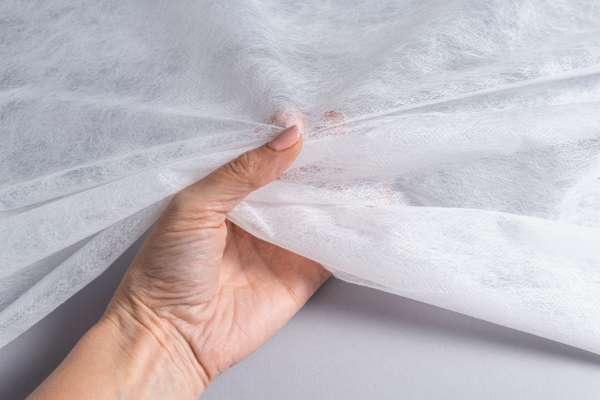
Fabric covers offer A charming, cost-effective, and easily changeable solution to cover your bookshelf. You can choose from a myriad of fabric types, from cotton to velvet, and patterns to suit your room’s aesthetic. Installing them can be as simple as suspending a curtain rod above the bookshelf and draping the fabric over it. Another method involves sewing fabric panels sized to fit each shelf. For easy access to your books, attach the fabric with Velcro strips. Not only does A fabric cover protect your books, But It also adds A personal touch to your room, Turning your bookshelf into A dynamic element of your home décor.
2. Utilizing Plastic Sheets
For those seeking A more robust And waterproof cover, plastic sheets are an excellent choice. Transparent plastic covers allow visibility of your books while offering protection against dust, spills, And even some sunlight. They’re easy to clean and maintain – A simple wipe-down is often enough. Installation can vary from draping the sheet over the bookcase to creating custom-fit panels. While plastic covers may not offer the same aesthetic appeal as fabric, they make up for it with their practical, heavy-duty nature.
3. Exploring The World Of Bookshelf Doors
Bookshelf doors, Whether they’re sliding panels, Hinged doors, Or roller shutters, Provide an effective And stylish solution to covering your bookcase. They can be made from various materials, Such as wood, Glass, Or metal, Allowing you to match them with your furniture And décor. While installing bookcase doors may require more effort and investment than other methods, they offer excellent protection and easy access to your books. Plus, they add a sense of refinement and order to your space. With bookcase doors, you can transform your book collection into an elegant library right in your own home.
Step-By-Step Guide To Covering Your Bookshelf
1. Preparation
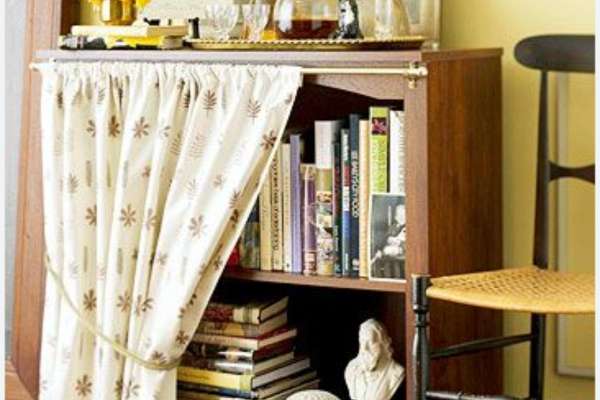
Before you embark on the journey to cover your bookshelf, You need to adequately prepare. Start by clearing your bookshelf And cleaning It thoroughly. Remove any dust, dirt, Or grime present. This step ensures that once your bookshelf is covered, you’re not sealing in dust or dirt that could potentially harm your books. Next, measure your bookshelf meticulously, ensuring you take into account the height, width, and depth. If your bookshelf has irregular features like molding or trim, include these in your measurements too. Having accurate dimensions will be essential when selecting or crafting your cover.
2. Choosing The Right Material
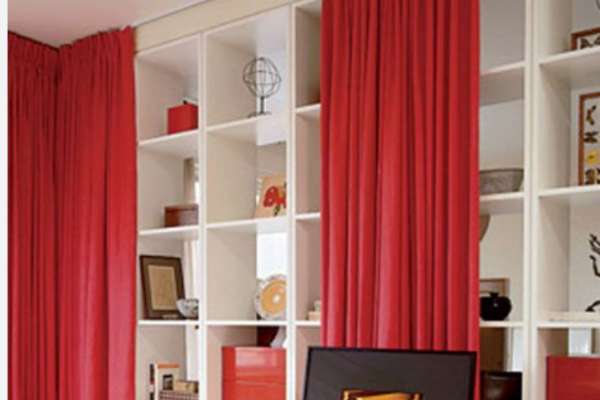
Selecting the perfect material for covering your bookcase is a crucial initial step. Your choice will depend on the desired aesthetics, durability, and usage. Traditional options include fabric, adhesive vinyl, and wallpaper, each providing a unique look. Fabric offers versatility in texture and pattern. Adhesive vinyl is easy to clean and resists moisture, making it ideal for kitchens or bathrooms. Wallpaper provides a wide variety of designs and is straightforward to install. Other innovative options include chalkboard paint for a creative and interactive surface or reclaimed wood for a rustic appeal. Ensure the material matches the room’s décor and serves its intended purpose. Be creative and don’t be afraid to mix and match, remember, this is your space to personalize.
3. The Covering Process
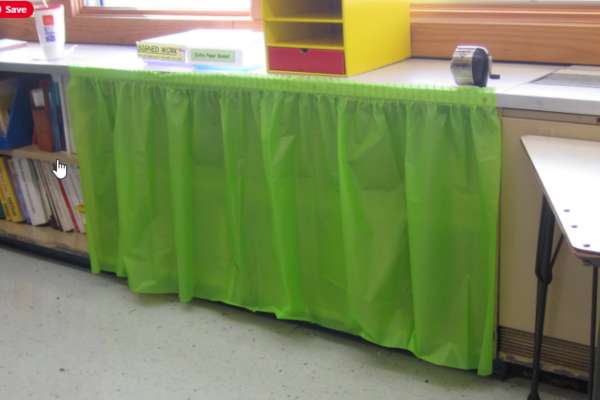
The process of covering A bookcase requires precision, patience, and A little DIY spirit. Begin by cleaning and prepping your bookcase, ensuring it’s free of dust and old paint. Measure the areas you wish to cover accurately, then cut your chosen material to these dimensions, allowing a little extra for adjustments. If you’re using fabric or wallpaper, apply a suitable adhesive to the bookcase surface and then carefully attach your material, smoothing out any air bubbles as you go. For adhesive vinyl, peel off the backing and press it onto the surface. With chalkboard paint, use a roller or brush to apply evenly. After applying, leave it to dry. Finally, trim any excess material and tidy up the edges. Once complete, your newly covered bookcase will be ready to showcase your favorite books and ornaments.
Care And Maintenance For Your Covered Bookshelf
Once you’ve invested time and creativity into covering your bookcase, it’s important to care for and maintain it to preserve its new appeal. Regular dusting with A microfiber cloth will keep the surfaces clean without damaging the Material. For more stubborn dirt or stains, use a mild cleaning solution appropriate for your chosen covering material. If you’ve opted for fabric, a handheld vacuum can be a practical tool for regular maintenance. For adhesive vinyl or painted surfaces, a damp cloth works well. Try to avoid using harsh chemical cleaners, as they might damage the covering material. Remember to periodically check for signs of wear or peeling, and repair these promptly. With careful maintenance, your creatively covered bookcase will continue to look stunning and serve as a focal point in your room for years.
Can I Cover A Bookshelf If It’s Already Full?
Absolutely! You can cover A bookshelf even if It’s already full. The key is choosing A method that’s minimally disruptive. Options include attaching a curtain rod above the bookcase And hanging A light, Decorative cloth, or installing a roller shade that can be easily pulled up and down. If you’re handy, you could also install hinged doors or sliding panels. These options allow you to cover your full bookcase without the need to move or remove your books.
Will Covering My Bookshelf Protect My Books From Humidity?
Covering your bookshelf can provide A degree of protection against humidity, But It’s not foolproof. While A cover may prevent direct exposure to humid air, It cannot alter the humidity levels inside the bookcase if the room itself is humid. For optimal protection against humidity, Consider A dehumidifier in the room or silica gel packs placed strategically on the bookshelf. Also, ensure your bookcase cover allows for some ventilation, As A completely sealed cover could trap humidity and potentially cause mold And mildew growth.
Conclusion
covering your bookshelf can be a fun and creative way to update the look of your space and protect your books from dust and damage. Whether you choose to use wallpaper, fabric, or contact paper, there are endless possibilities for customization and personalization. Remember to measure carefully, take your time during the application process, and smooth out any air bubbles or wrinkles for a polished finish. With a little patience and creativity, you can transform your bookcase into a statement piece that reflects your unique style. So go ahead, get started on covering your bookcase, and bring new life to your home décor!
